|
'New'
varieties for Valpolicella
A project that is
rediscovering the best of the old grape varieties in this region
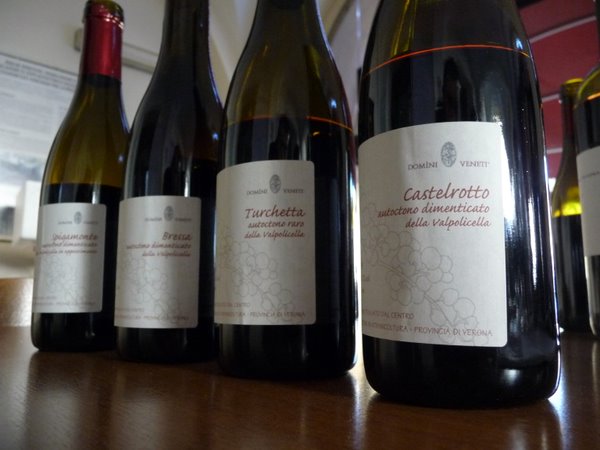
On a recent trip
to the Valpolicella wine region (near Verona, in northeast Italy) I
had a chance to taste some very interesting wines made at the
Provincia di Verona Servizio Agricultura, with the director of the
Centro per la Sperimentazione in Vitivinicolture, Emanuele Tosi.
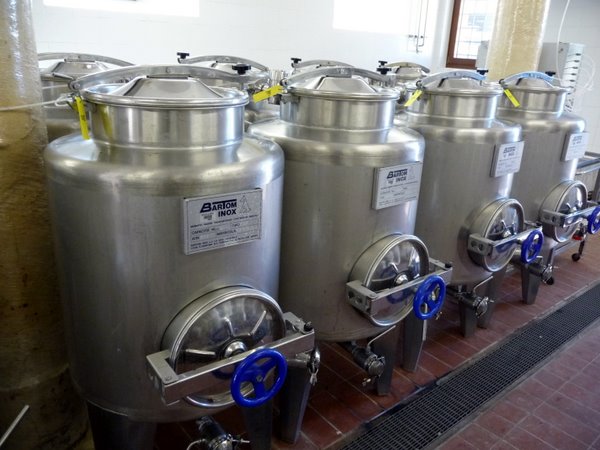
The Centro's experimental winery
The Centro have been looking at new grape varieties for use in
the region, to supplement the three staples here: Corvina,
Rondinella and Corvinone. But rather than bring in varieties from
outside, they have decided to look at very old varieties that are
already found within the Valpolicella area. This is a commendable
approach.
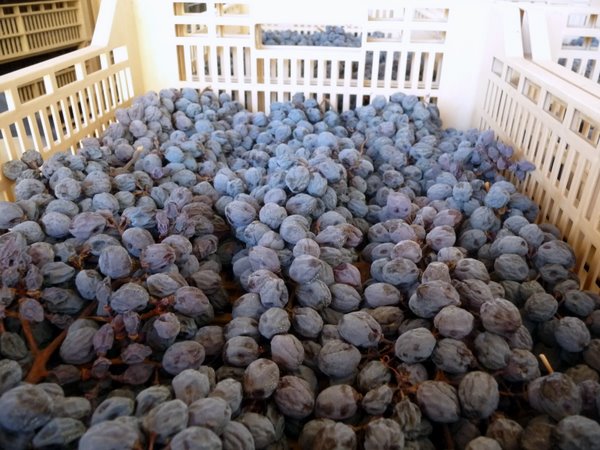
Grapes drying, for making Amarone: these are
Corbina
The new varieties
would be used both for regular Valpolicella (Fresco wines) as
well as the celebrated Amarone wines, made from drying grapes before
fermentation (Appassimento wines).
We tried
experimental wines made from these new varieties, as well as a
Corvina as a reference. The wines were all made at the Centro's own
winery.
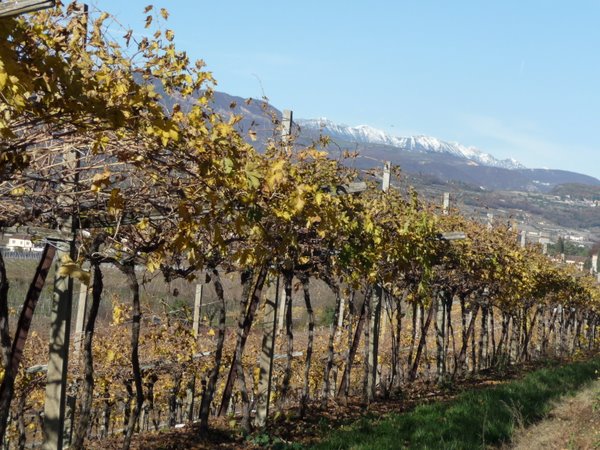
Typical trellising in the region
Corvina 2008
Bright and fresh with vibrant floral cherry fruit and a hint of
sweetness. The palate is bright with fresh red cherry and raspberry
fruit and good acid. A really bright wine. 87/100
Castelrotto
2008
This is one of the new varieties that has been rediscovered in
the region: it was propogated from a very old vine that looked
different to all the others, and is named after one of the local
towns. It has lovely intense pure dark cherry fruit on the nose with
a bit of chocolatey richness. The palate is concentrated, fresh and
pure with sweet, appealing dark cherry and blackberry fruit. Very
successful with lovely purity of fruit. 91/100 [Molecular analysis
has shown that this variety is actually the same as Teroldego]
Bressa 2008
Firm, dense and spicy on the nose with some savoury earthy
notes. The palate has lovely freshness t the bright fruit with a
strongly savoury, spicy, earthy character and high acidity. Lively
and food friendly. 89/100 [Molecular analysis has shown that this is
the same as Barbera]
Spigamonte
2008 (made with grapes that had been dried for a while, Amarone
style)
This is a brand new 'old' variety: DNA analysis has shown that it is
not the same as anything else. Concentrated, focused dark fruits
nose is quite pure with a spicy edge. The palate shows lovely
freshness and purity of fruit: dark cherry and blackberry. Dense and
concentrated with lovely acidity and structure. Really fresh and
intense. Fantastic. 93/100
Turchetta 2008
This is the result of a big project started 10 years ago. 60
varieties that had been rediscovered were trialled, and from these
five were selected to be added to the catalogue of varieties to
plant in the region. This has a fresh dark fruits nose with lovely
freshness and a subtle herby edge. Lively and fresh with bright
cherry fruit, although there is a touch of spritziness to this
sample. 89/100
Turchetta 2008
(from dried grapes)
Very sweet and juicy with bright, fresh dark cherry fruit. Juicy and
bright with good purity and freshness. 90/100
Corbina 2008
From the same project, this is a high polyphenol grape that
could be added at, say, 10% to the blend to improve it. It's lovely
and vivid with fresh dark fruits, a hint of cherry, and a touch of
meatiness. The palate is dense and concentrated with amazing
tannins, good acidity and great depth. Really mouthcoating. 91/100
Corbina 2007 (from dried grapes)
Fermentation was stopped because of high volatile acidity, so
there's 70 g/litre of sugar here as well as 16% alcohol. Amazing
depth of fruit: structured and sweet, with incredible concentration.
It is so dark you can dilute it with five times the amount of water
and it still seems impenetrable.
These varieties all show a lot of promise, with my favourites the
Corbino and Spigamonte, which I thought were fantastic.
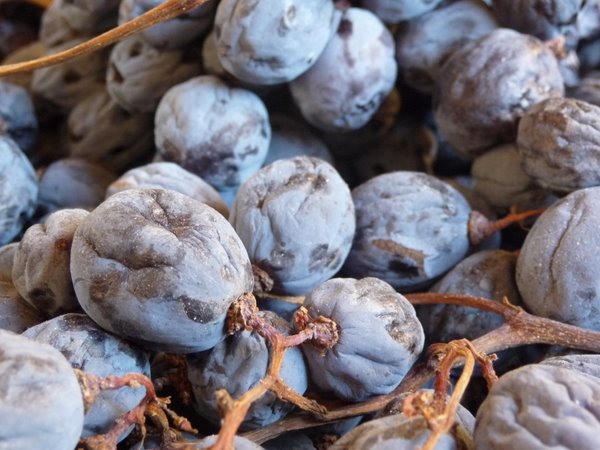
While we were
there we also had a chance to look at some grapes nearing the end of
the drying process.
See
also:
 Visiting
Chianti Classico Visiting
Chianti Classico
Wines
tasted 12/09
Find these wines with wine-searcher.com
Back
to top
|